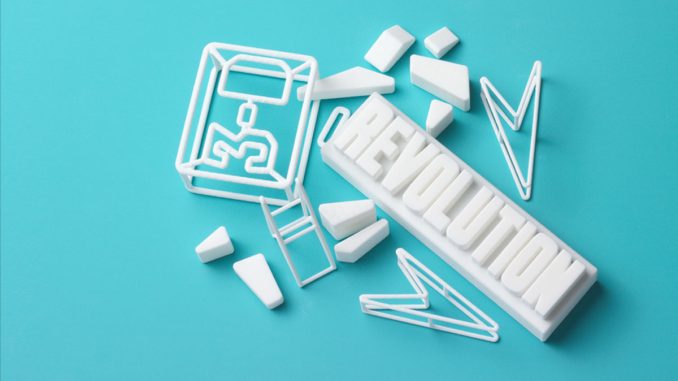
Introduction
The 3D printing revolution is here, and it’s transforming the world of manufacturing and design as we know it. Imagine being able to bring your wildest ideas to life with just a few clicks. From intricate prototypes to personalized creations, 3D printing has opened up a whole new realm of possibilities. In this blog post, we will explore the fascinating world of 3D printing, its applications across various industries, and glimpse into the future where imagination knows no bounds. So buckle up and get ready for an exhilarating journey into the realm of limitless creativity!
Understanding 3D Printing
Have you ever wondered what exactly is 3D printing? Well, let me break it down for you in simple terms.
At its core, 3D printing is a process of creating three-dimensional objects from a digital file. It involves adding layer upon layer of material until the desired object takes shape. The materials used can range from plastics and metals to ceramics and even food!
What makes 3D printing so fascinating is its versatility and precision. Unlike traditional manufacturing methods that involve subtracting or molding materials, 3D printers build objects by depositing material in predetermined patterns.
The technology behind 3D printing has come a long way since its inception. Today, there are various types of 3D printers available, each with unique capabilities and applications.
From rapid prototyping in industries like automotive and aerospace to creating custom prosthetics and medical implants, the possibilities with 3D printing are endless! It has revolutionized manufacturing processes by reducing costs, increasing efficiency, and enabling complex designs that were once unimaginable.
In addition to industrial applications, 3D printing has also found its way into consumer markets. Hobbyists can now bring their ideas to life at home using affordable desktop printers. Artists can create intricate sculptures with ease. Even fashion designers have embraced this technology to push boundaries in their creations.
As more advancements continue to be made in the field of additive manufacturing (another name for 3D printing), we can expect even more exciting developments on the horizon. Researchers are exploring new materials such as biocompatible polymers for biomedical applications or conductive filaments for electronic components.
The potential impact of 3D printing on various industries cannot be overstated. It is transforming not only manufacturing but also design processes across the board.
In conclusion (not really concluding though!), understanding how this revolutionary technology works opens up a world of possibilities where imagination becomes reality! So stay tuned as we delve deeper into the applications and future of 3D printing. Happy printing!
Applications of 3D Printing
The applications of 3D printing are vast and varied, revolutionizing numerous industries and sectors. One significant application is in the field of healthcare. 3D printing allows for the creation of customized prosthetics, implants, and even organs. This technology has the potential to improve the quality of life for individuals with disabilities or medical conditions.
In architecture and construction, 3D printing enables architects to quickly create detailed models and prototypes. This not only speeds up the design process but also allows for greater precision and accuracy in construction projects. Additionally, it opens up possibilities for creating unique structures that were previously difficult or impossible to build.
Another area where 3D printing is making a significant impact is in manufacturing. Traditional manufacturing methods often involve complex machinery and lengthy production processes. With 3D printing, objects can be created layer by layer directly from a digital design file, eliminating many traditional manufacturing constraints.
The automotive industry is also embracing this technology by using 3D printers to produce parts more efficiently and cost-effectively. It offers flexibility in design iterations while reducing waste material during production.
Furthermore, education has greatly benefited from 3D printing as it provides hands-on learning experiences for students across various disciplines such as engineering, biology, art, and more.
The Future of 3D Printing
As technology continues to advance at an unprecedented pace, the future of 3D printing looks incredibly promising. With its ability to transform manufacturing and design, this revolutionary technology is set to reshape various industries.
One area where we can expect significant growth is in healthcare. Already, 3D printing has been used to create prosthetics and implants that are custom-made for individual patients. In the future, we may see entire organs being printed using a patient’s own cells, eliminating the need for organ transplants and reducing waiting lists.
Another exciting prospect is in architecture and construction. Imagine being able to print entire buildings with intricate designs in a fraction of the time it takes using traditional methods. This would not only revolutionize the industry but also open up new possibilities for sustainable and affordable housing solutions.
In the world of fashion, 3D printing has already made waves with designers creating unique garments that push boundaries. In the future, we could see personalized clothing being printed on-demand, allowing individuals to express their style without limitations.
Furthermore, as materials science advances hand-in-hand with 3D printing technology, we can anticipate more diverse materials being used in additive manufacturing processes. From metals to ceramics and even biodegradable plastics derived from renewable sources – these developments will broaden the range of applications for 3D printing across numerous sectors.
It’s important to note that these are just a few examples of how 3D printing could shape our future. As innovation continues to drive this field forward, there are boundless opportunities waiting to be discovered.
With each passing day bringing new advancements and breakthroughs in 3D printing technology, it’s clear that we’re only scratching the surface of its potential impact on manufacturing and design. The possibilities seem limitless as this powerful tool evolves alongside other emerging technologies such as artificial intelligence and robotics.